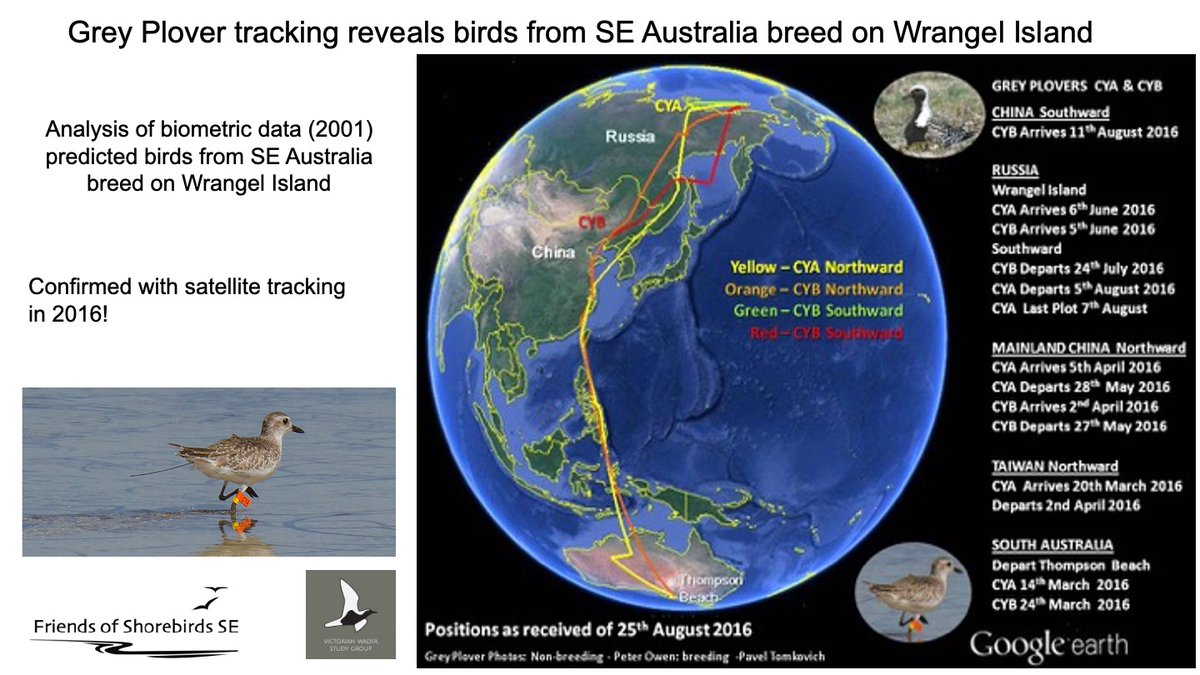
1/6 140 VWSG volunteers have been monitoring waders in SE Aus for 40 years. We have several important sites around Victoria, Tas & S. Australia for catching and banding waders. Data are used for pop monitoring, migration route, survival and repro rate assessment
#ISTC20 #Sesh8
#ISTC20 #Sesh8
2/6 Using geolocators we have revealed the AMAZING migration of Ruddy Turnstones. Flagging shows individuals return to exactly the same stretch of beach on King Island each summer. Adult birds migrate ~12,500km to Siberia to breed before returning
#ISTC20 #Sesh8
#ISTC20 #Sesh8
3/6 Curlew Sandpipers are experiencing drastic population declines. Through tracking, we find that they leave earlier, use fewer sites, are more site specific, and arrive later than Red-necked Stint, which has only minor population declines. #ISTC20 #Sesh8 

4/6 30 years of nest counts and banding of Crested Terns at 3 Vic colonies show high annual variation in site use and colony exchange. Adult survival is high, but chick survival is variable and affected by prey (fish) availability #ISTC20 #Sesh8 

5/6 Satellite tracking studies of Grey Plovers confirmed predictions from early biometric analysis (tandfonline.com/doi/abs/10.107…) – birds from S. Aus breed on Wrangel Is! Two marked birds departed and arrived within short time frame.
More here: vwsg.org.au/news-events/gr…
#ISTC20 #Sesh8
More here: vwsg.org.au/news-events/gr…
#ISTC20 #Sesh8

6/6 Banding/flagging reveals the lifespan of waders. Two amazing records show pied oystercatchers live over 30 years.
We always welcome new volunteers, so please join us. More info vwsg.org.au
#ISTC20 #Sesh8
We always welcome new volunteers, so please join us. More info vwsg.org.au
#ISTC20 #Sesh8
• • •
Missing some Tweet in this thread? You can try to
force a refresh



